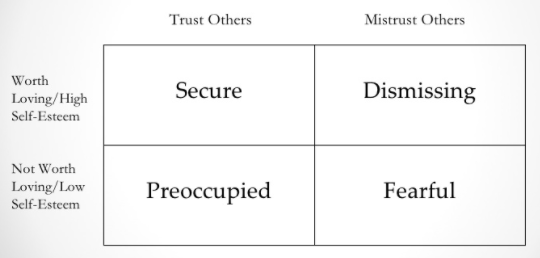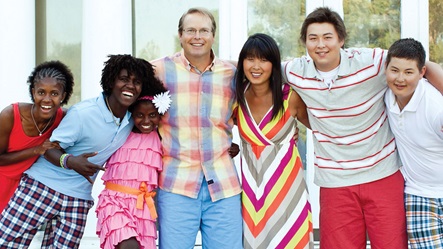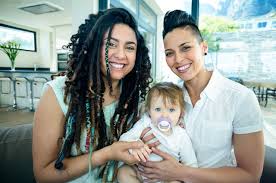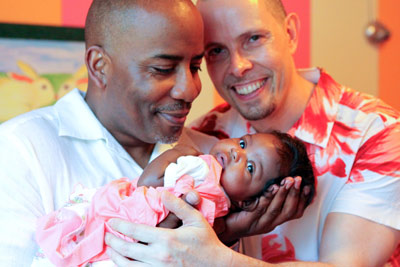Growing up can be hard. There’s homework, bullying, drugs and alcohol, girlfriends and boyfriends, best friends, bad teachers, sports teams and parents. Does having a traditional family at home help with all that? Or does having a non-traditional family make things harder?
If someone asked you to describe what a family is, what would you say?
Phil is a 33-year-old, white homosexual man who lives with his partner of 3 years. When asked to define family, Phil stated:
“I truly believe that family is whatever you make of it. It doesn’t have to be a mom, a dad and a kid. My family, I consider like the two friends I was just talking about, I consider them my family, And I consider my mom part of my family, and my brothers. But I would never close it off to blood [only]. So, it’s kind of whoever you’re close to and people that you love, is your family.” (Hull & Ortyl, 2018)
Phil’s definition of family blends both structural and functional elements. He identifies the kinds of people that might constitute family (a structural approach) but also says “it’s whoever you’re close to and people that you love” (which is a functional approach).
For Leslie, the definition of family includes biological relatives as well as chosen friends. Leslie, a 35-year-old, white bisexual woman, gave the following definition of family:
“Blood relations, I guess, through thick and thin. People you grew up with. People that are still there for you, and maybe not necessarily blood-related, because I have a lot of people that I consider family that I’m not related to in any way, shape or form. But they have just been an integral part of my life. They’re important for me and that makes them my family. Without them “what would I do?” sort of thing. I mean, I have a lot of people like that. So I would say blood related and forced to, or not blood related and went out and chose them myself. Different kinds of family.”
Like many people, Leslie tries to explain what family is by reflecting on her own close relationships and experiences, and what she considers her family (Hull & Ortyl, 2018).
A theme you might have noticed is that the notion of families of choice is very present, but very rarely replace other kinds of family in definitions of one’s current family, instead they usually complement rather than completely replacing them (Hull & Ortyl, 2018).
If you’re interested, here is an article from CBC, that does a great job talking about how important it is for Canada to keep expanding it’s idea of a ‘normal’ family. As our communities diversify, so does society’s definition of what a family is and the way it is described.
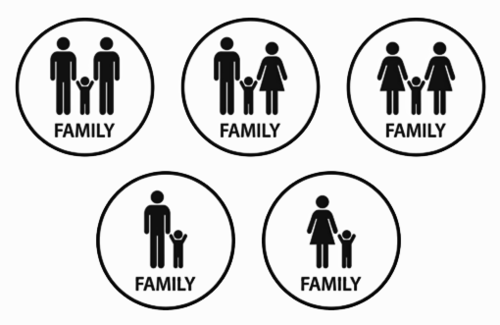
This brings up the point that there is a great need for studies about the use of health services by families from sexual orientations outside of heterosexuality. Family-centred care (FCC) is a model to provide care for all families. This is so important for potentially vulnerable families who may not fit within the stereotype of the nuclear, heterosexual family. FCC is especially significant for those families where one or more parents are transgendered or are in the process of transitioning from one sex to another (Shields, Zappia, Blackwood, Watkins, Wardrop & Chapman, 2012).
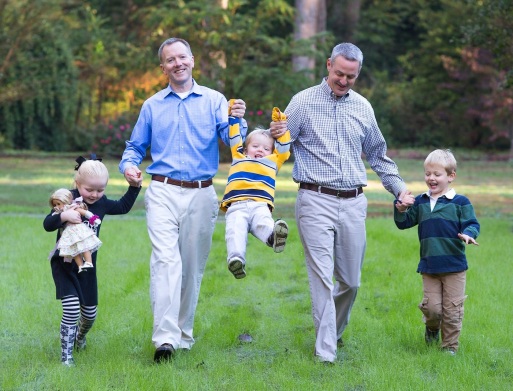
So back to the question at hand: Is one type of family better for children than another? A lot of people believe that children who grow up in households with LGBTQ+ parents are at a disadvantage, compared to children of heterosexual, cis-gendered parents. However, research does not appear to back this belief up, in fact decades of research have shown that children raised by same-sex parents and children raised by different-sex parents fare equally well (Few‐Demo, Humble, Curran & Lloyd 2016).
Children’s well-being is affected by their relationships with their parents and the presence of social and economic support for the family, it is much less affected by the gender or sexual orientation of their parents (Few-Demo et al., 2016).
So then where do these ideas stem from?
Most people believe that LGBTQ+ families are visible and included, however they did not perceive the school environment to be very welcoming for these families (Bishop & Atlas 2015). Schools today are teaching children from a variety of cultural, ethnic, and family backgrounds, however they still have a long way to go before the needs of all families are met…
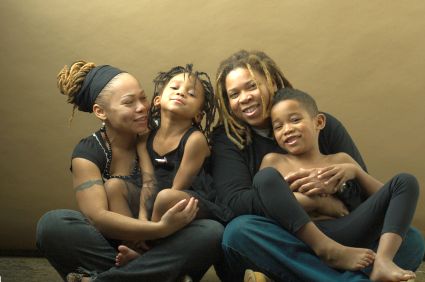
One of the issues facing these parents is how their children are treated in school. The degree to which schools are inclusive is unclear, but based on existing research, they do not appear to provide a very safe environment for families with LGBT members. In a study conducted examining the school experiences of families with LGBTQ+ parents, over 50% of parents indicated feeling excluded from their school communities.
Approximately 1/4 of these parents reported hearing negative comments and experiencing mistreatment by other parents and students. 16% of lesbian mothers had experienced harassment, threats, or discrimination at their child’s school or by other parents (Bishop & Atlas, 2015). Research has found that students from LGBTQ+ families felt similar isolation and alienation from their school environment as their parents.
Young adults with lesbian mothers were interviewed and found that 36% had been teased by their peers because of their mother’s sexual orientation, 42% were verbally harassed, and 36% felt that the school did not acknowledge their LGBT family (Bishop & Atlas, 2015).
After safety and comfort issues, the second concern of LGBTQ+ parents was a lack of an inclusive curriculum for their children. Members of the LGBTQ+ community were discussed so little that children of LGBTQ+ parents often felt frustrated because their peers had so many questions and found it hard to understand their family structure.
An inclusive curriculum has been shown to enhance the school experiences of LGBT students by decreasing homophobic remarks, lessening victimization, creating a greater sense of belonging in the school community, and making it easier for students to talk with teachers about LGBTQ+ issues (Bishop & Atlas, 2015).
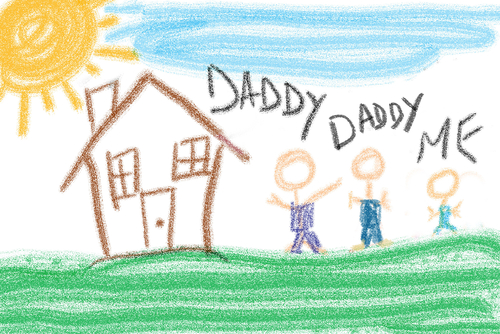
In addition to remaining largely invisible in school curricula, LGBTQ+ families are often not acknowledged in school policies, social events, students clubs, and common conversations. In one study, 73% of students reported that their schools had a policy in place for harassment and victimization; however, few reported that those policies mentioned sexual orientation or gender identity/expression (Bishop & Atlas, 2015).
Schools are not creating a climate that is inclusive enough for LGBTQ+ families. This puts those children at risk for social and emotional difficulties at school. Thus, children with LGBTQ+ parents continued to be at risk for feeling different and for feeling frustration when their peers do not understand their family structure (Bishop & Atlas, 2015). When schools do not have an inclusive policy, it makes it more difficult for LGBTQ+ parents to feel safe being “out” because they may fear harassment for their children as well as themselves.
When young adults who were raised by LGBTQ+ parents were interviewed, they experienced both direct and indirect forms of stigmatization. They were more likely to have been teased or belittled because they had LGBTQ+ parents and also reported feeling stigmatized when teachers and other adults discussed same-sex marriage or homosexuality in negative ways (Moore & Stambolis-Ruhstorfer, 2013). Of those who had experienced bullying of this nature, they reported feeling hurt and angry, as well as embarrassed.
Faced with such experiences, lesbian and gay families are forced to create strategies to confront the stigma and negativity. Parents communicate closely with their children and teach them how to explain their family to others. They also create large social support networks with family and friends. Children of LGBTQ+ parents develop their own techniques to deal with the stigma associated with their parents’ sexual orientation (Moore & Stambolis-Ruhstorfer, 2013).
For example some young adults pursued several strategies including:
- Keeping quiet about parents sexual orientation
- Speaking up and educating their peers when faced with negative comments, and
- Directly confronting instances of homophobia or seeking out support groups.
It was hypothesized based on previous research that schools located in more diverse areas, such as larger urban environments, would have a more welcoming environment and be more tolerant of LGBTQ+ individuals and families. Schools have the ability to generate change in society and create positive experiences regarding LGBT individuals. For social change to occur in schools, their curricula, policies, and practices need to reflect society at large and fully include all types of people and families.
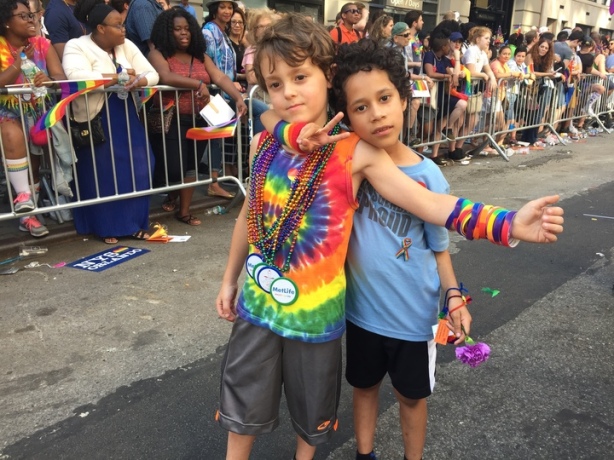
There are a variety of reasons why schools may not be addressing LGBT-headed families in their curriculum:
- Teachers may believe that same-sex orientation is private and inappropriate for children to discuss
- Believe that children are too young to be exposed to the ‘sexual issues’ involved in teaching about LGBTQ+ families
- Have a lack of information about the topic
- Feel uncomfortable with the topic or with answering questions
- May hold homophobic views or have certain religious beliefs
- They may fear being viewed as homosexual themselves
- Might be concerned with violating administration policy
- Fear there would be objections from parents
Everyone deserves to be valued regardless of sexual orientation or gender identity. To ensure a safe and welcoming school environment for all, staff, students, and parents need to work together to try and meet the ever-changing needs of society.
For more information on parenting as a member of the LGBTQ+ community feel free to visit this website which aims to support queer parenting through research, training, resources and community development. It even offers Family Planning Courses
Although the literature on gay and lesbian parents is growing, the body of work on trans parents is virtually non-existent (Haines, Ajayi & Boyd, 2014). Transgender people are those whose gender identity or gender expression does not correspond to the gender they were assigned at birth (Dierckx, Mortelmans, Motmans & T’Sjoen, 2017).
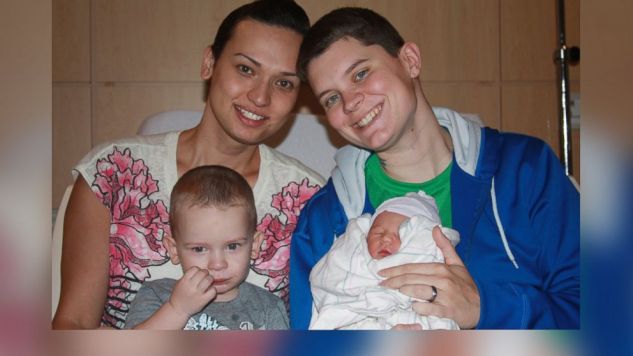
Existing literature on transgender parenthood has focused on 3 main things:
- The experiences of the transitioning parent
- The experiences of the other parent
- The experiences of children as reported by others (ex. parents, therapists)
Research on the viewpoint of children themselves is scarce. This is something that should be changed as the transition of a parent is not a neutral event for children. They are likely to experience a wide range of emotions including feelings of loss, grief, betrayal and shame (Dierckx et al., 2017).
Witnessing a parent’s transition is a unique experience, and the child is unlikely to know anyone in a similar situation. As a result, the specific needs of the child are often unmet when a parent gender transitions. Several risk and protective factors have been identified for children with a transgender parent.
First, the developmental age of the child has been observed to be important. Younger children are generally more accepting of a gender transition than older or adult children. Teenagers are more likely than those of other ages to take a parent’s gender transition personally, perhaps due to adolescent egocentrism
Another important consideration is social stigmatization and trans-negativity, which children with transgender parents may experience. For example, some cases have been reported in which children would not allow their transgender parent to be seen with them in public or to have contact with their friends, an example of this can be seen in the show The Fosters when a main character is embarrassed of having two moms and so ends up dancing with a man instead of her moms at her Quinceanera. A child’s adjustment and reaction to a parent’s transition is a process rather than a static response (Dierckx et al., 2017).
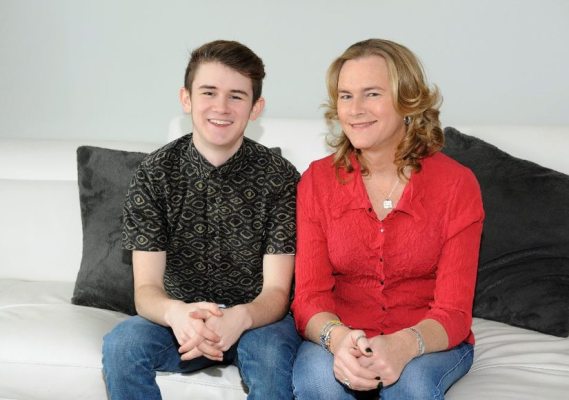
There are 4 common protective processes experienced by children when their parent transition:
- Family continuity
- Family communication
- Significant others’ acceptance
- Attributing meaning.
While there is discontinuity caused by the gender transition of the parent, continuity in other aspects of life can be not only very helpful, but also a protective factor for children and parents. Continuity in the transgender parent’s behaviour, which does not need to change drastically during the transition. Continuity can also be better safeguarded if the transition was gradual rather than happening immediately after they come out. This time aspect appears to be a crucial factor for children to accept and adapt to the gender identity of the transgender parent (Dierckx et al., 2017). Another protective process is open communication in the family and feeling comfortable asking questions, and answering them openly and honestly.
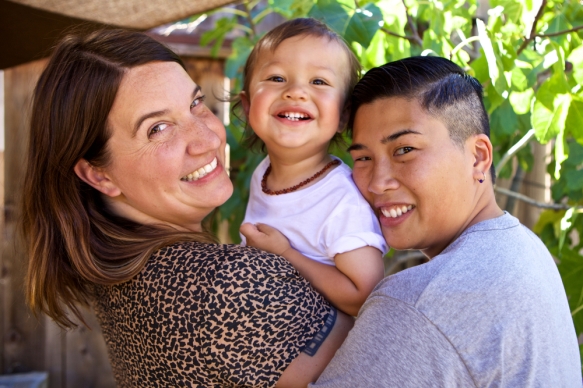
Many parents are concerned about the stigma associated with their trans status being transferred to their children and becoming manifested as victimization. These concerns are sadly, not always unwarranted. One parent writes,
‘‘My son was beaten up because of who I am and was bullied regularly.’’
Another parent shared their non-linear experience:
“My daughter (who I told about transitioning when she was 8) was mostly supportive in terms of using female pronouns and calling me by my female name. She has had moments when she’s been embarrassed by me (I was teaching in her elementary school when I started transition and that created a lot of complications) and sometimes has expressed anger for losing ‘a dad’.” (Haines et al., 2014)
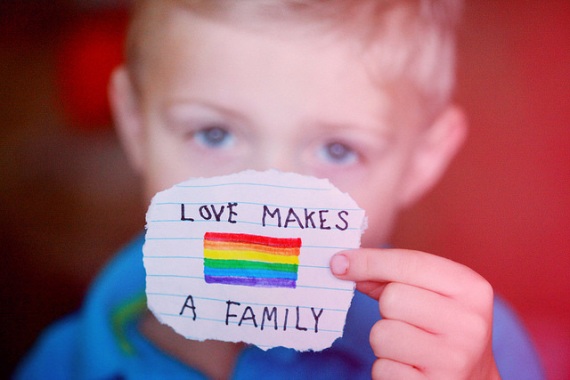
Transgender parents need to carefully judge whether it is wise to be out in particular parenting settings, but take on transphobia and bullying directly and immediately if needed. They may experience a state of uncertainty as family members take time to adjust to changes within the family (Catalpa & McGuire, 2018). However children are likely to be very understanding, and with resilience and the ability to withstand and rebound from adversity, families can get through these changes.
For example, Jolien, the 15-year-old daughter of a trans woman, stated:
“I walk [with my biological father] in the street and see how people are looking . . . [but] it doesn’t matter that much because I am aware there will always be people who think it is weird and others who will accept it.”
Another shared:
“I would have understood if my mother [would have left my father] ’cause now I sometimes ask myself if she’s still happy. I cannot see myself doing what she did. It’s probably also because I’m getting older that I ask myself these kinds of questions. Of course, I was happy then that they stayed together, but now. . . . I just hope she is still happy with that decision.” (Lauren, 19-year-old daughter of a trans woman)
A final individual shares the value of open communication and honesty through out the process:
“My parents talked honestly about what was going on in [my stepparent’s] head and what was lying ahead for us as a family. . . . The whole process has been discussed . . . [so] I understand what is going on [and] I can place it in the longer process.” (Jasna, 16-year-old stepdaughter of a trans man)
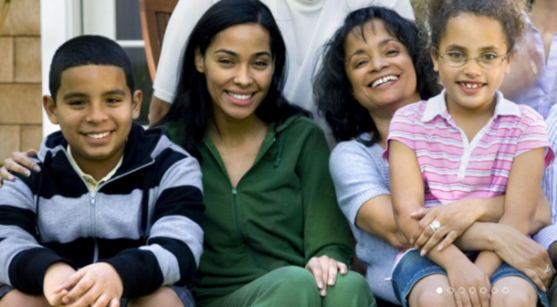
Existing research does not support the assumption that children with LGBTQ+ parents develop atypical gender behaviour, gender identity, or sexual orientation, nor do they experience long-term mental health problems. Through good practices and protective processes within the family, the transition of a parent’s gender can be accepted by children (Dierckx et al., 2017).
Additionally, many positives have been found from LGBTQ+ families. Same-sex parents are less worried about gender nonconformity, and spend more time on shared interests and activities. They also use less corporal punishment than heterosexual parents do with their children (Moore & Stambolis-Ruhstorfer, 2013).
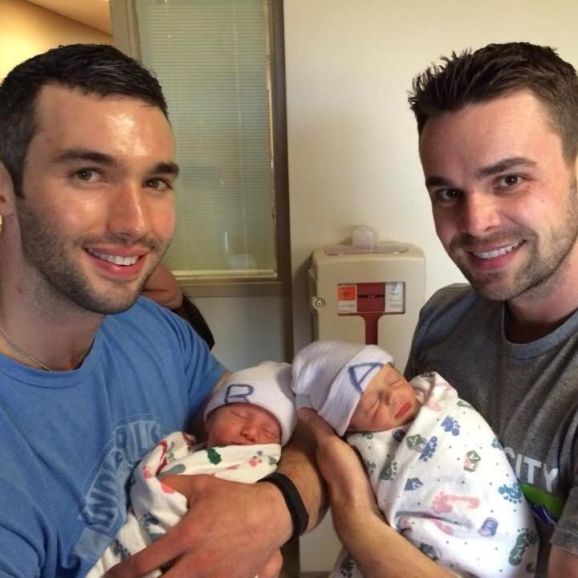
The division of labor in lesbian relationships is simultaneously less taken for granted and more equal when compared with heterosexual relationships. Because of this, children raised by lesbian parents may grow up with a more flexible understanding of their own gender and sexuality (Moore & Stambolis-Ruhstorfer, 2013).
Overall better outcomes were reported for children living in areas that were more supportive of LGBT populations and had anti-discrimination laws to protect sexual minority populations. These findings suggest are promising and show how big a role laws can play in reducing the effects of stigma for youth raised in LGBT-parent families.
For more information please visit the following websites that provide excellent information as well as resources for LGBTQ+ parents and families.
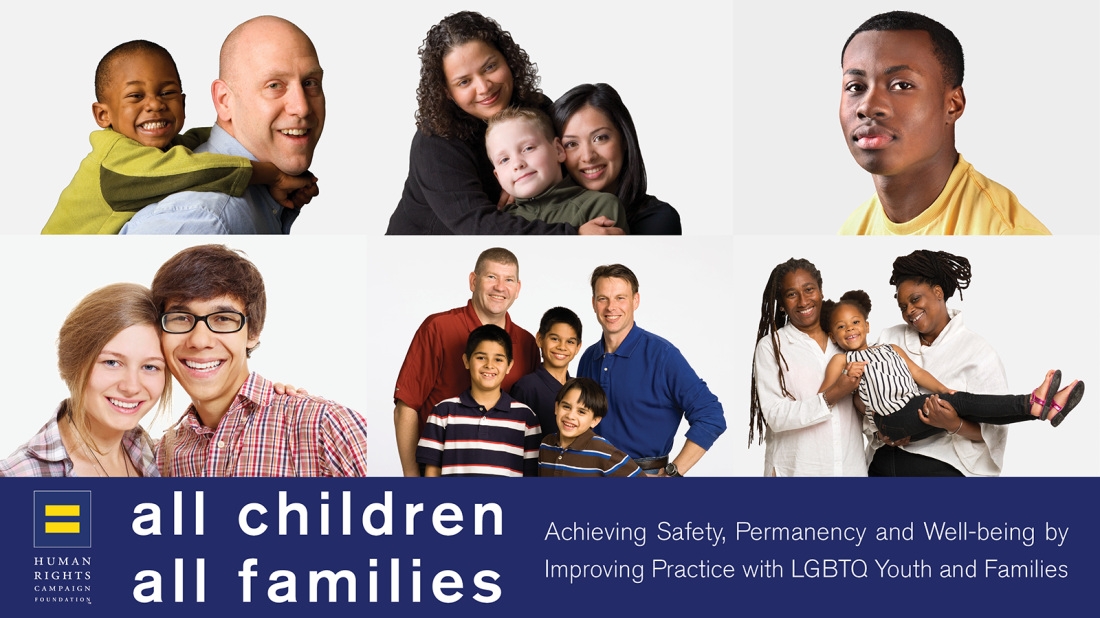
- All Children All Families: Achieving safety, permanency and well-being by improving practice with LGBTQ youth and families
- 12 books that feature LGBTQ parents
- Buzzfeed LGBT
- Stats Canada: Stats on Canadian same-sex couples from 2016
If you are not a member of the LGBTQ+ community here are some great videos and links on how to be an ally:
- A super simple comic guide on gender, sex and sexuality
- 10 things all allies needs to know
- Being a trans ally
In closing, being a child in an LGBTQ+ family is not immediately putting you at a disadvantage, and our diversity is to be celebrated. I hope you enjoyed reading this and if you haven’t, I encourage you to take time out of your day to try and learn more about the LGBTQ+ community.
Start with a fun movie that is in theatres now!
References
Bishop, C. M., & Atlas, J. G. (2015). School curriculum, policies, and practices regarding lesbian, gay, bisexual, and transgender families. Education and Urban Society, 47(7), 766-784. doi:10.1177/0013124513508580
Catalpa, J. M., & McGuire, J. K. (2018). Family boundary ambiguity among transgender youth. Family Relations, 67(1), 88-103. doi:10.1111/fare.12304
Few‐Demo, A. L., Humble, Á. M., Curran, M. A., & Lloyd, S. A. (2016). Queer theory, intersectionality, and LGBT‐Parent families: Transformative critical pedagogy in family theory. Journal of Family Theory & Review, 8(1), 74-94. doi:10.1111/jftr.12127
Haines, B., Ajayi, A., & Boyd, H. (2014). Making trans parents visible: Intersectionality of trans and parenting identities. Feminism & Psychology, 24(2), 238-247. doi:10.1177/0959353514526219
Hull, K. E., Ortyl, T. A. (2018). Conventional and cutting-edge: Definitions of family in lgbt communities. Sexuality Research and Social Policy, doi: 10.1007%2Fs13178-018-0324-2
Moore, M. R., & Stambolis-Ruhstorfer, M. (2013). LGBT sexuality and families at the start of the twenty-first century. Annual Review of Sociology, 39, 491-507. doi:10.1146/annurev-soc-071312-145643
Shields, L., Zappia, T., Blackwood, D., Watkins, R., Wardrop, J., & Chapman, R. (2012). Lesbian, gay, bisexual, and transgender parents seeking health care for their children: A systematic review of the literature. Worldviews on Evidence‐Based Nursing, 9(4), 200-209. doi:10.1111/j.1741-6787.2012.00251.x


